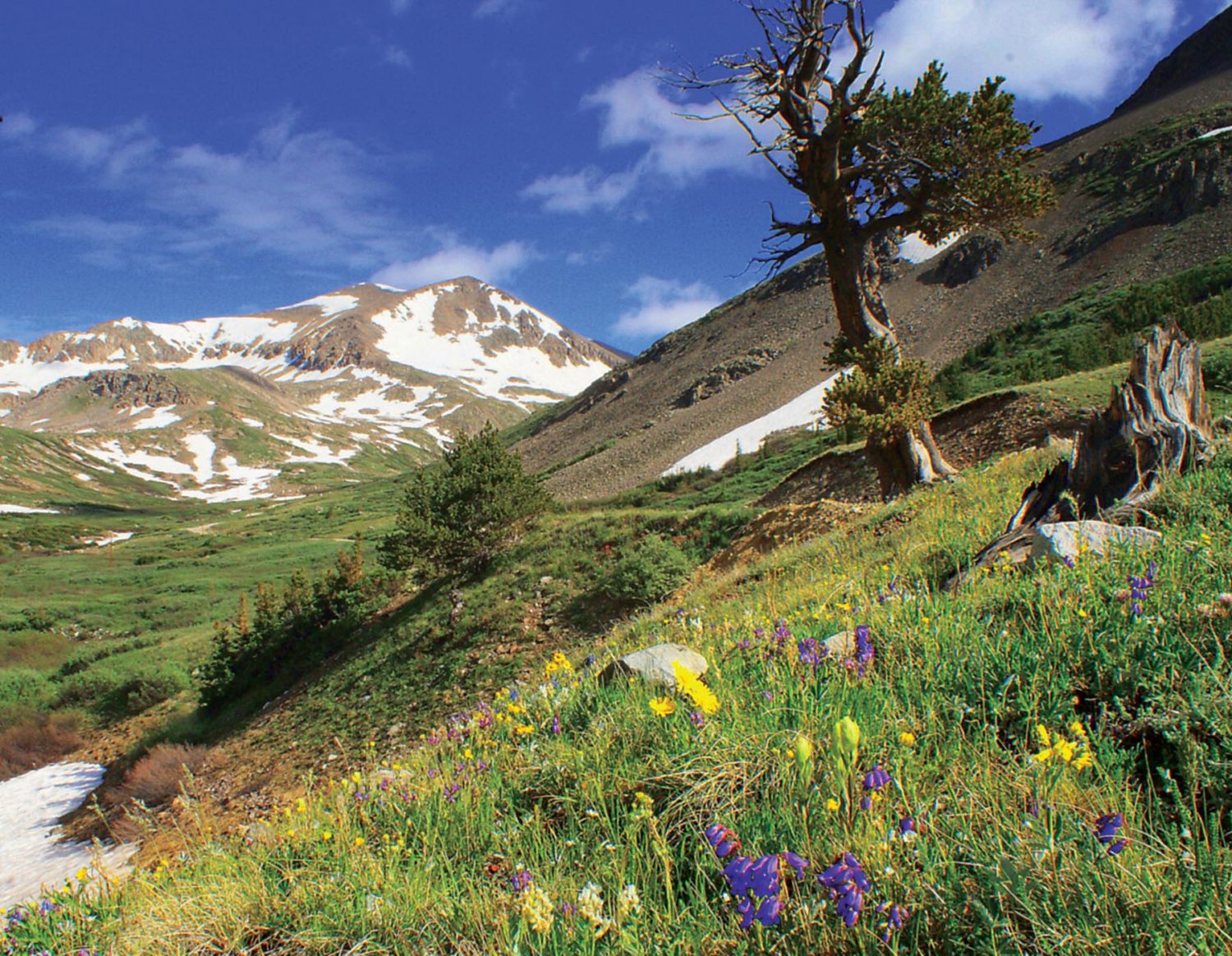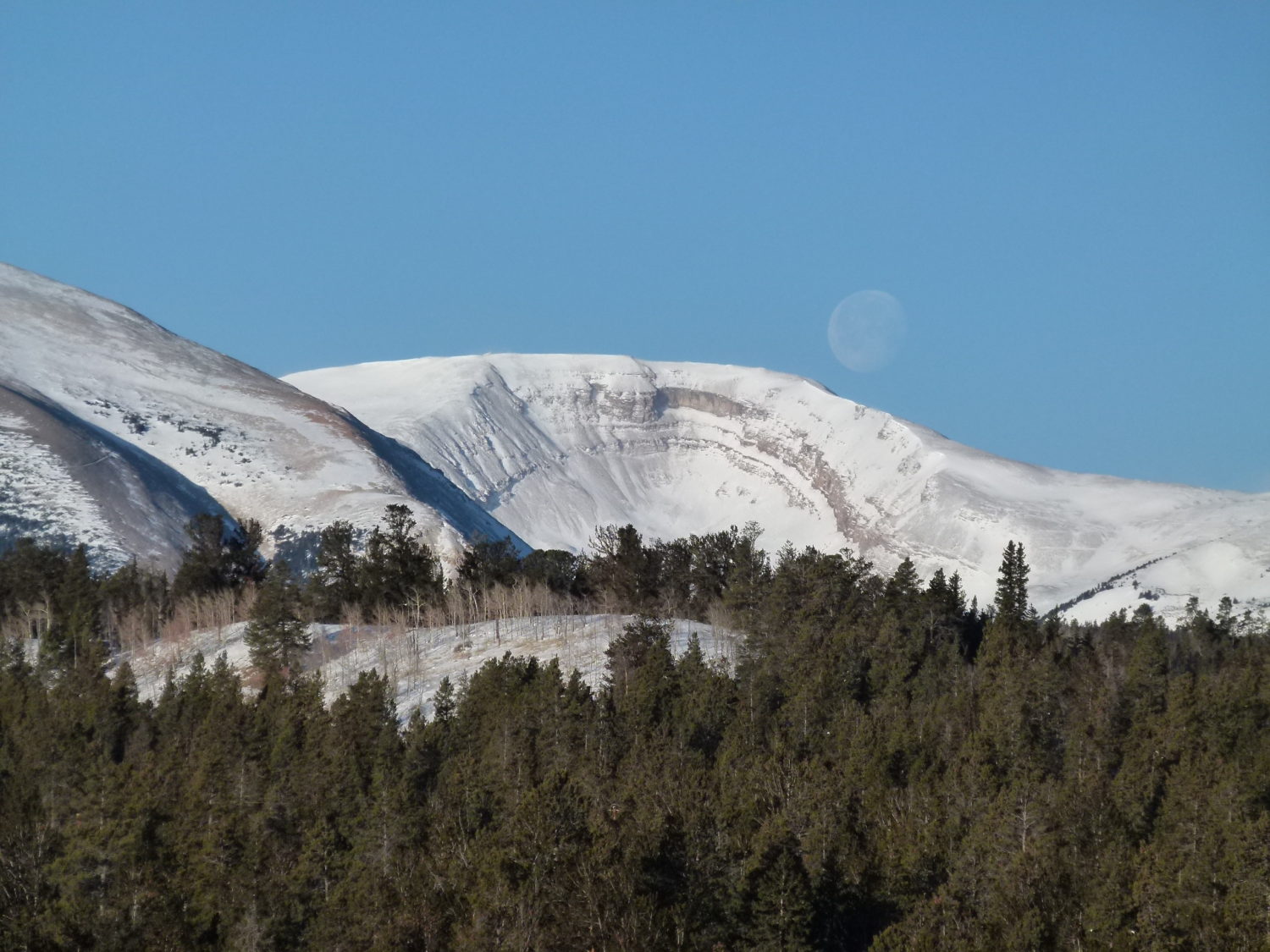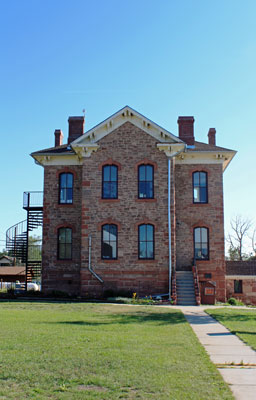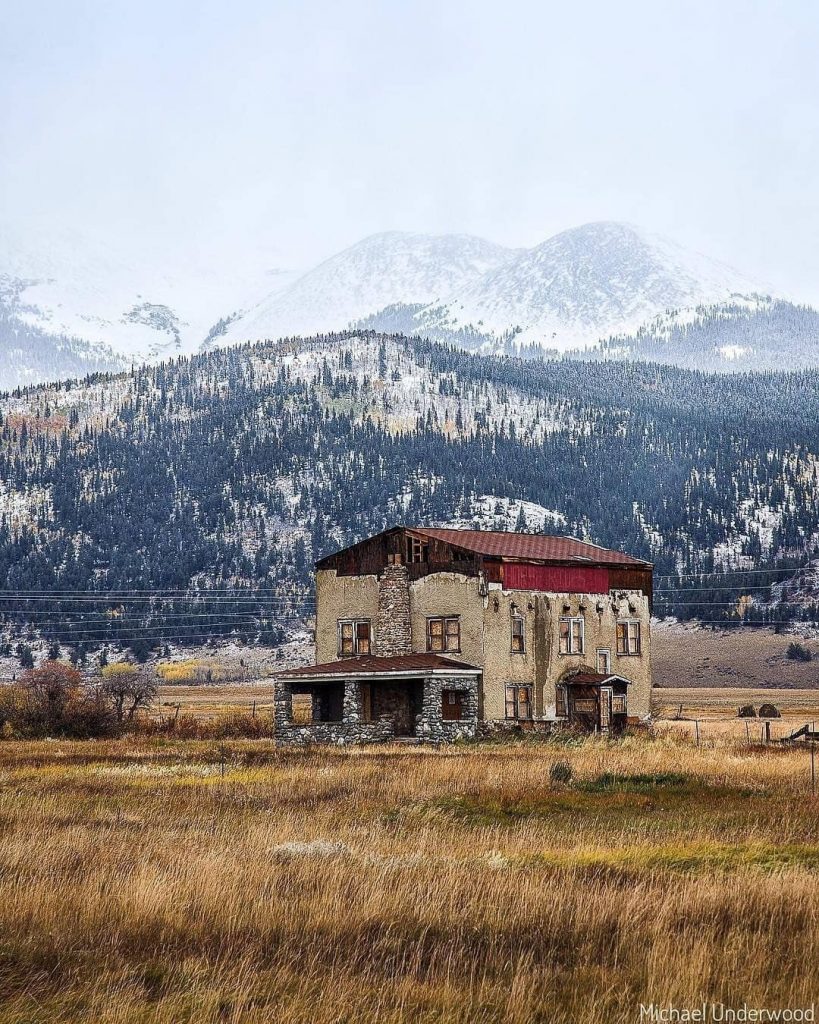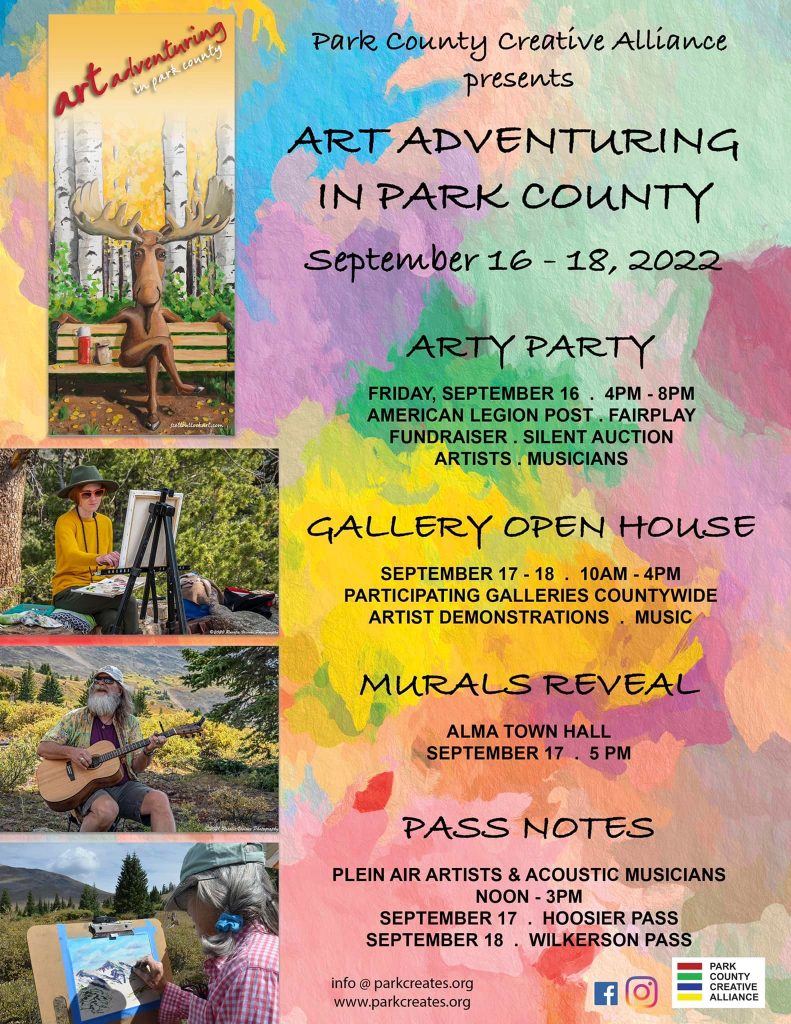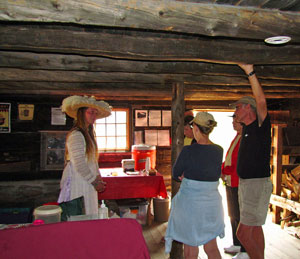South Park
Western History, Hiking, Horseback Riding, Fishing, 14ers
South Park National Heritage Area is in the heart of Colorado. It is here where the past is always present, protecting and promoting its existing historic mining and ranching structures as well its natural resources. It’s less than two hours’ drive from Denver or Colorado Springs, but feels like a journey back in time – to the days of prospectors, trappers and even prehistoric man. In South Park, you can ride horseback, hike in an authentic wilderness area, or fish lakes and rivers all the while enjoying the scenic vistas that include Colorado’s snowcapped 14,000-foot peaks.
Be sure to see:
The People
South Park’s stunning landscape is matched only by its compelling stories that place it squarely in the history of the American West. Here, native peoples, particularly the Ute, returned year after year to favorite camping spots, hunted, and cut stone for projectile points. The Spanish called the place Valle Salado (Salt Valley) for the salt springs used by the American Indians, while French explorers and fur trappers used the word parc in reference to the valley’s vast herds of wildlife. It wasn’t, however, until the Pikes Peak Gold Rush of 1859 that the population mushroomed as gold camps sprang up overnight. Within a dozen years, gold valued at $2.5 million had been extracted in Park County.
Places to See
South Park City Museum
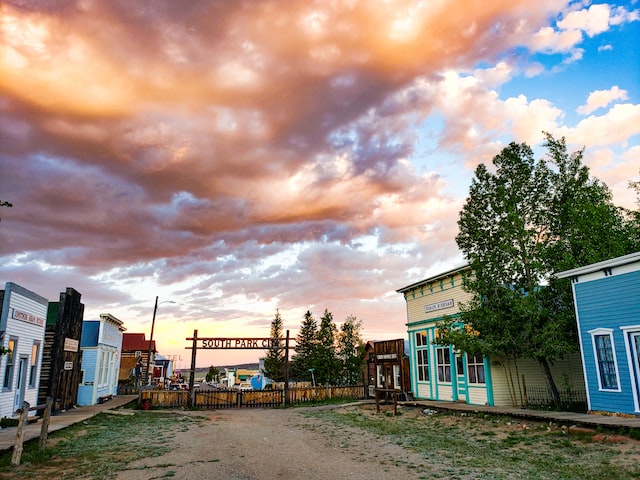 The year was 1859. Gold was discovered in South Park, a 900 square mile basin surrounded by Colorado’s majestic Rocky Mountains. The gold rush was on! Hordes of gold-seekers spilled into the Park. The mountains were dotted with mining camps sporting names like Tarryall, Leavick, Eureka, and Buckskin Joe within a few short months. These camps grew to become thriving communities on the edge of the frontier. Gradually the mining dried up, and the people moved on, leaving their towns and camps to the elements until all that remained were decaying ghost towns. South Park City is a remarkable representation of these early towns, preserving the history of our Nation’s frontier while it educates and entertains the present. Located in Fairplay, Colorado, the museum accurately represents a mining town between 1860 and 1900. Forty-four authentic buildings are filled with over 60,000 artifacts. They portray most of the economic and social aspects of boom town life. Seven of the buildings are on their original sites. The other buildings were moved from abandoned camps and ghost towns in the South Park area. They contain period room settings and exhibits that illustrate the professions, trades, and industries that contributed to life in a 19th century Colorado mining town.
The year was 1859. Gold was discovered in South Park, a 900 square mile basin surrounded by Colorado’s majestic Rocky Mountains. The gold rush was on! Hordes of gold-seekers spilled into the Park. The mountains were dotted with mining camps sporting names like Tarryall, Leavick, Eureka, and Buckskin Joe within a few short months. These camps grew to become thriving communities on the edge of the frontier. Gradually the mining dried up, and the people moved on, leaving their towns and camps to the elements until all that remained were decaying ghost towns. South Park City is a remarkable representation of these early towns, preserving the history of our Nation’s frontier while it educates and entertains the present. Located in Fairplay, Colorado, the museum accurately represents a mining town between 1860 and 1900. Forty-four authentic buildings are filled with over 60,000 artifacts. They portray most of the economic and social aspects of boom town life. Seven of the buildings are on their original sites. The other buildings were moved from abandoned camps and ghost towns in the South Park area. They contain period room settings and exhibits that illustrate the professions, trades, and industries that contributed to life in a 19th century Colorado mining town.
paris mill
 The Paris Mill is located on the eastern slope of the Mosquito Range in Park County, Colorado at an altitude of 11,000′. Construction of the Mill was completed in 1895 to service the Paris Mine high above Buckskin Gulch on Mount Bross. The complex ore and high altitude location of the mine, which was first discovered in 1878, hampered the profitability of the mine and so its investors constructed the Mill and tramway in order to reduce transportation and smelting costs. The Mill saw a nearly constant stream of investors throughout its first 40 years who strove to improve its profitability and retrofit the building with the latest milling technology. Unfortunately, the Paris Mine hindered these endeavors by providing ore that was increasingly difficult to process, which would shut down the entire operation for years at a time while new technology was installed at the Mill. The Mill’s period of significance begins with its construction in 1895 and continues to 1937 when major mill operations ceased. The Mill has primarily sat idle since the 1937 closure with its most recent occupation being a brief drilling operation in 1977. It was nominated to the National Register of Historic Places under Criterion A for Industry as well as Criterion C for Engineering and Architecture. The Mill is nearly complete, including its machinery, engineered systems, structural elements, and architectural aspects and is one of few intact mills remaining from this era in Colorado
The Paris Mill is located on the eastern slope of the Mosquito Range in Park County, Colorado at an altitude of 11,000′. Construction of the Mill was completed in 1895 to service the Paris Mine high above Buckskin Gulch on Mount Bross. The complex ore and high altitude location of the mine, which was first discovered in 1878, hampered the profitability of the mine and so its investors constructed the Mill and tramway in order to reduce transportation and smelting costs. The Mill saw a nearly constant stream of investors throughout its first 40 years who strove to improve its profitability and retrofit the building with the latest milling technology. Unfortunately, the Paris Mine hindered these endeavors by providing ore that was increasingly difficult to process, which would shut down the entire operation for years at a time while new technology was installed at the Mill. The Mill’s period of significance begins with its construction in 1895 and continues to 1937 when major mill operations ceased. The Mill has primarily sat idle since the 1937 closure with its most recent occupation being a brief drilling operation in 1977. It was nominated to the National Register of Historic Places under Criterion A for Industry as well as Criterion C for Engineering and Architecture. The Mill is nearly complete, including its machinery, engineered systems, structural elements, and architectural aspects and is one of few intact mills remaining from this era in Colorado
Old Park City Court House
Erected in 1874, two years before Colorado achieved statehood, the Old Park County Courthouse housed county court functions for 132 years and continues to actively serve the public today. Essentially unchanged since the time of its construction, the building’s period of significance ranges from 1874 to 1964 and is notable for its architectural qualities, for the information that may be derived about early construction techniques in an isolated area, for its contribution to local settlement, and for its 140-year role in the administration of law and government in Park County. The Courthouse is prominently located along Colorado Highway 9 on the Courthouse Square in Fairplay, Colorado, centered on a wide lawn that also includes the historic county jail. The building is characterized by its red sandstone walls and Italianate design features—tall windows, hooded window crowns, paired cornice brackets, and hipped roof.
The use of locally sourced red sandstone connects the building to the landscape of Park County, adding a regional flavor to its design and emphasizing the role of the Courthouse as a symbol of the county. The size of the Courthouse, its decorative features, and its striking red sandstone walls set the building apart from other structures in Fairplay and identify the Courthouse as a public building of great importance to the community. The Park County Courthouse and Jail were listed on the National Register of Historic Places in 1979 and was designated as a Park County Historic Landmark in 1999.
Tarryall-Cline Ranch
For 90 years the eclectic Tarryall-Cline Ranch house has stood proudly like a sentinel amidst a beautiful meadow just off Highway 285 in Park County. The main ranch house was built in 1928 by the ranch owner, Foster Cline, Sr., a prominent Denver attorney. Cline was the deputy district attorney in Denver from 1913 to 1917 and again from 1925-1929 and was later the regional administrator for the U.S. Securities and Exchange Commission. The ranch house is a Park County landmark, located between the towns of Como and Jefferson, and was owned by, and associated with Cline and his family for most of its history. Cline himself never intended to live there full-time, but rented it out to a steady succession of ranch managers who operated hay and livestock businesses on site.
Things to Do
Art Adventuring in with the Park County Creative Alliance
Boreas Pass Railroad Days
Burro Days
The World Championship Pack Burro Race, held the last weekend of July, has been a unique celebration of South Park’s mining heritage since the first race in 1948. The concept is simple: get up to Mosquito Pass and back to Fairplay with your burro and cross the finish line. In reality, the 29 mile course with 3,000 feet of elevation gain is made more difficult when you involve the stereotypically stubborn burro. The idea for Colorado’s only indigenous sport comes from the days of prospectors roaming the surrounding mountains with their faithful burros in search of gold and other valuable minerals. Legend says that the races began when two competing miners had to race back to town with their burros to file their claim, and thus the burro race was invented. Miners often participated in the Burro Race in its early years, but as mining declined and miners moved away, the racers became more diverse. The race has since developed into a two day celebration that brings over 10,000 visitors to our mountain communities and includes a llama race, arts & crafts fair, parade, and more. The Burro Days festivities are managed by the Burro Committee and all proceeds go to the local school district.
The Festival in the Clouds is the most popular event sponsored by the Alma Foundation, a non-profit organization that works to further the quality of life in the Alma community. The Festival began in 1997 as a venue for local musicians and artists to gain exposure but has blossomed into a full-fledged music festival that is the largest fundraiser for the Alma Foundation. Each July, cars line the streets of Alma as crowds gather in the town park to hear their favorite bands, peruse local art, and enjoy great food. The Festival generally features 25 bands and 40 regional artists each year and also includes children’s’ activities, a beer garden, and dancing. What makes the event truly special is that it is staffed completely by volunteers and all bands donate their performances.

